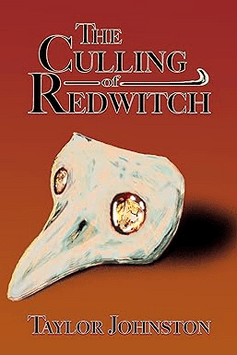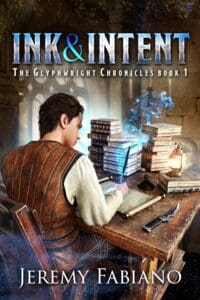
Synopsis
This spine-chilling tale follows a plague doctor with unique skills as he investigates disappearances in a dreamlike English village in the fall of 1361. Not knowing who to trust, he must rely on his sword, wits, and knowledge of magic and medicine to fight off men and monsters as he attempts to unravel this dark mystery.
In this world, plague doctors do more than just heal the sick. They battle the monsters from the otherworld and their finish masters. Magic and medicine are their concoctions to rid the world of the plague forever. Their kind is both feared and hated, yet they fight to protect their forlorn world.
One Doctor plagued by nightmares, will travel to a mysterious village at the behest of a Baron to investigate missing persons. The Doctor soon realizes it’s difficult to find answers in a village that harbors so many secrets. What he discovers may send him to the precipice of hell and shatter his sanity. Can he protect the villagers from an evil that feeds on chaos? Will his nightmares ever end or are they only just beginning?
Follow the Doctor into a fog-ridden world of terror and madness.
Review
With its historical setting and plague doctor main character, “The Culling of Redwitch” is a novel with a lot of potential.
Ten years after the great plague that destroyed half of Europe, a French plague doctor known only as ‘the doctor’ continues to ply his trade in England. He is part of a secret society of plague doctors that seeks out the last remnants of the plague. They are adept at dealing with preternatural enemies as well as biological ones.
When the society is contacted by the small village of Redwitch to discover what is behind the recent spate of disappearances, and whether it could be the plague, the doctor is dispatched to sort it out. Not everyone in the village is happy to see the plague doctor arrive. Can he cut through their secrets and lies to find out what is happening to the villagers and save them before it is too late?
The doctor is enigmatic. Haunted by scenes from the plague a decade before, he is left with mental illness that he treats with a tea made from mushrooms. He is a French man, of African descent, working in England at a time when England and France are midway through the hundred years war.
He wears his plague doctor mask wherever he goes. In a world where disease is often accompanied by malevolent spirits, the doctor wields his own mysterious magic to help him cure the sick.
Set in fourteenth century England, the book shows how important religion is to the people of that time. While England and France were both Catholic in 1361, the doctor doesn’t seem to be a believer. It is a part of his character that would have benefited from more development.
The writing style is straightforward. The book is easy to read.
Set mostly in the bucolic village of Redwitch, with a few scenes in London at the start, the world building focuses mainly on a late medieval feudal village. The author has obviously done research into the time period, yet his depiction of the past is hit and miss.
The book is well paced. A dramatic encounter at the beginning of the book provides a compelling hook. The mystery of Redwitch is revealed in satisfying chunks to keep the reader engaged.
The idea for this book is great, and the scenes that deal directly with the doctor fighting the preternatural are superb. The ending has some effective scenes that are compelling, surprising and tense. I grew attached to some of the characters and worried for their safety.
Unfortunately, the book is filled with anachronisms that kept taking me out of the story. Apart from the mention of pumpkins, which didn’t arrive in England for another couple of centuries, and blue stockings, a derogatory expression from the eighteenth century, the world is not believable for England at the time period.
I am interested in history and I love the medieval period. While I consider 1361 to be quite late middle ages, it was a fascinating time and a wonderful setting for a book. Apart from the political turmoil of England at that time, and the interesting medical procedures, it was a theistic world that was shaped and influenced by the Catholic faith of the people. To explore characters and how they interacted with the faith is interesting. To treat the characters with modern day mores and beliefs is annoying.
The doctor has the potential to be such a great main character. I love the idea of plague doctors fighting demons in the middle ages. The main character is shrouded in mystery, which I found frustrating rather than intriguing. His magic is never explained. Neither is why he constantly wears the iconic plague doctor mask, which was most likely not around in 1361. His mental health struggles were interesting. Why there was so much prejudice against a plague doctor is another thing I would have liked to see developed further. The fact that he is French, when England is at war with France for over fifty years, is not touched upon in the novel. In fact, his love interest mentions how she’d love to visit his estate in France and live there. I was disappointed that the war wasn’t mentioned at all, when surely this must have been a topic of contention for the people at the time.
If you like the idea of horror in the middle ages, I highly recommend “The Plague Wolves” by Coy Hall and “Angel Mass” by MG Mason.
The idea of a plague doctor who also fights demons is fantastic and is sure to appeal to horror fans as well as those interested in historical horror. If you don’t mind medieval England coming across more like seventeenth century America, then you will enjoy this book.
The author has talent. The book is a great concept, with some exciting scenes, especially at the end of the book, but is hampered by anachronisms and the need for more flesh on its bones when it comes to certain characters and aspects of the world building.







Leave a Reply